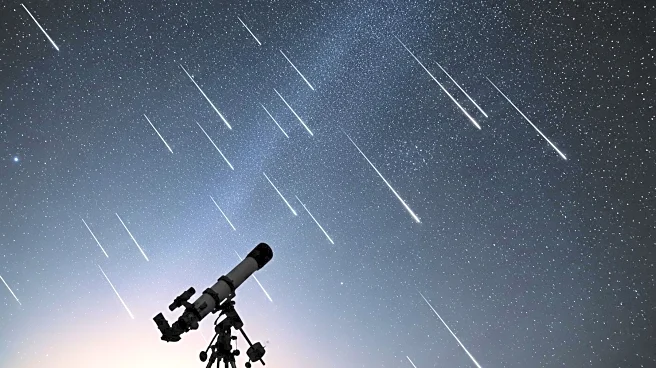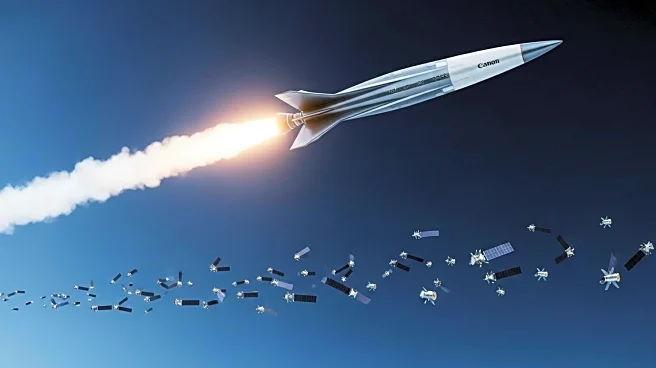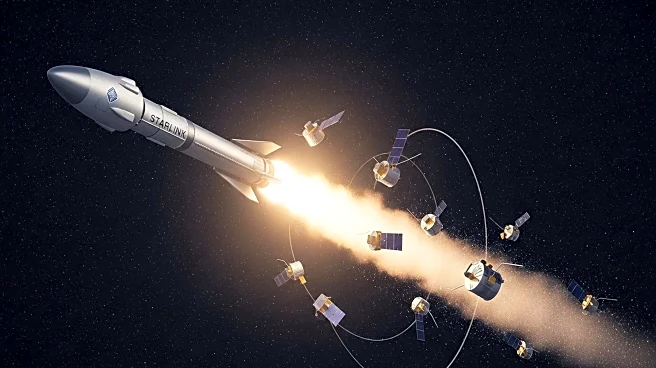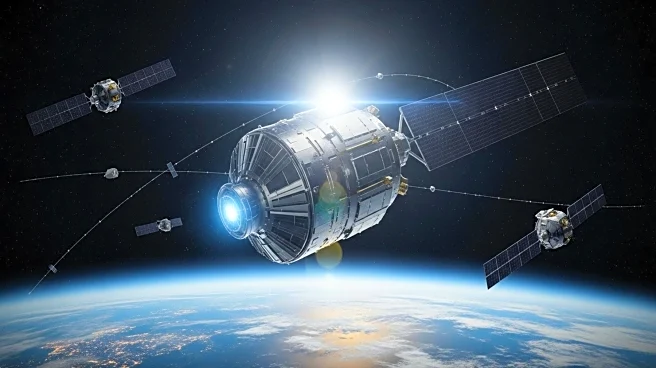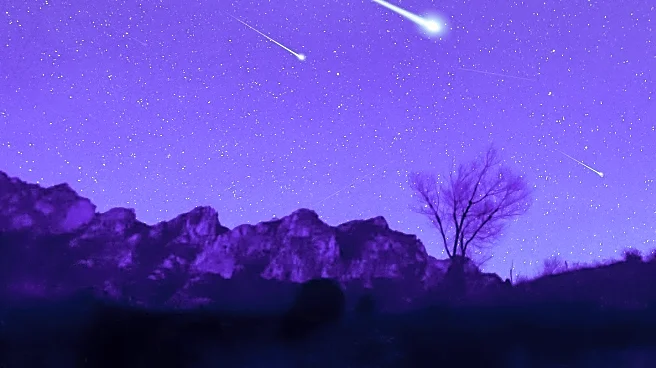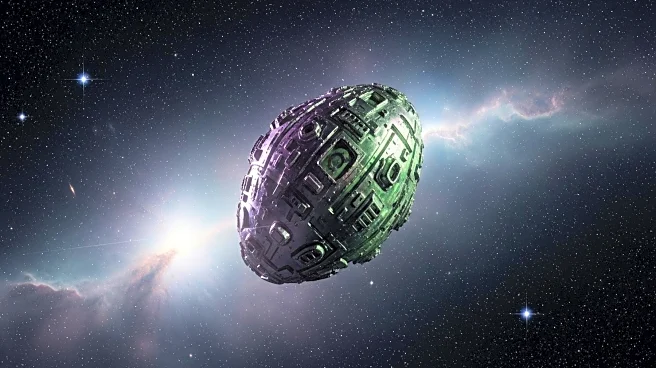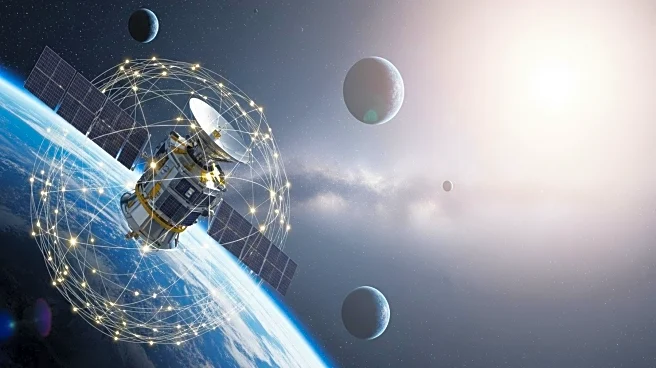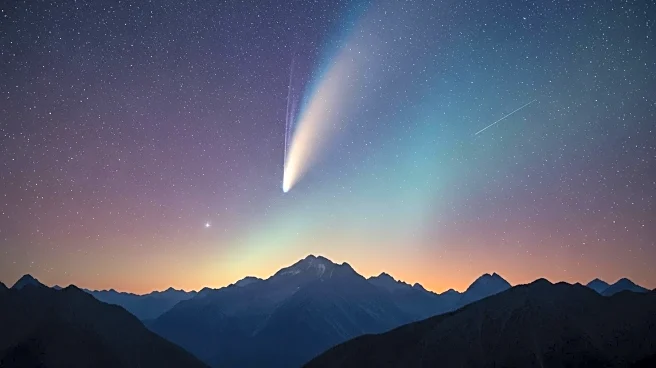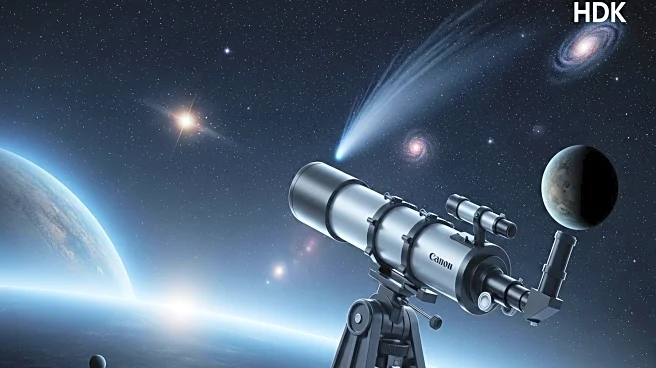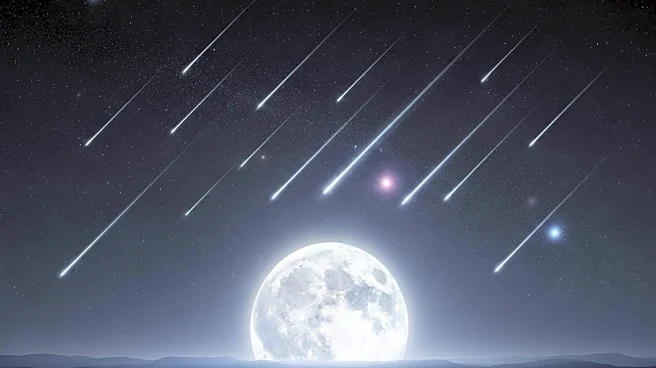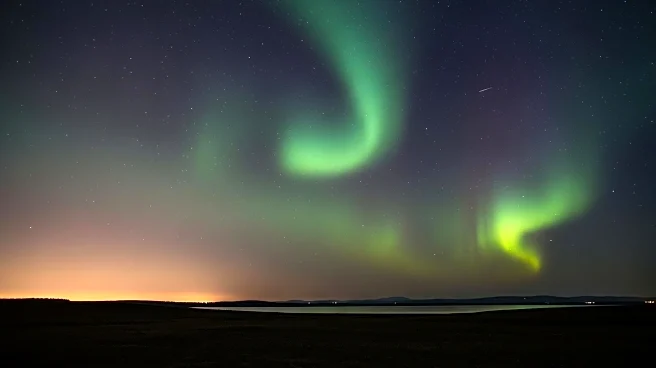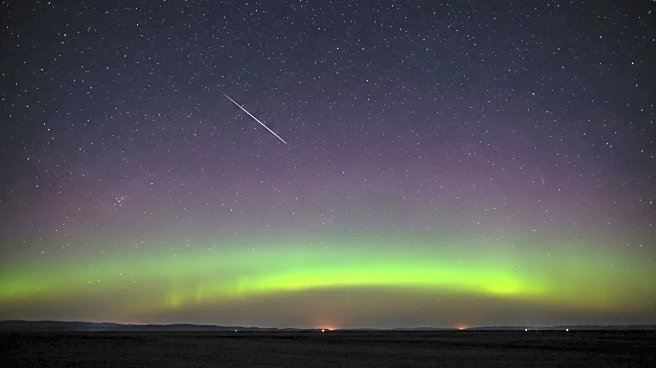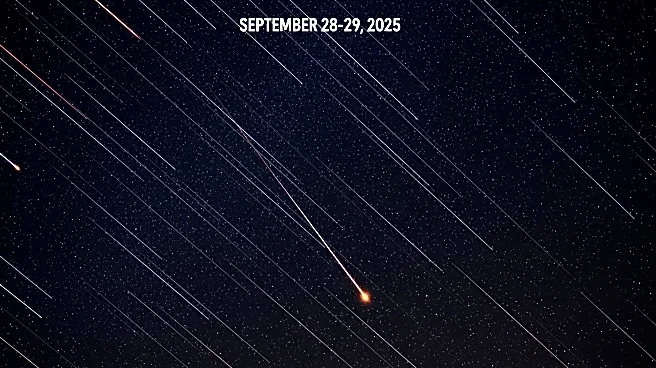What is the story about?
What's Happening?
NASA has announced a series of celestial events occurring in early October 2025, including the Draconid and Orionid meteor showers. The Draconids, originating from comet 21P/Giacobini-Zinner, will be visible from October 6 to 10, peaking on October 8. However, a full Harvest Moon on October 6 may obscure the view of fainter meteors. The Orionid meteor shower, linked to Halley's Comet, will be active from October 2 to November 12, with a peak expected around October 20-21. During this peak, observers might see 10-20 meteors per hour under dark skies. Additionally, a strong geomagnetic storm is predicted around October 2, potentially allowing the Northern Lights to be visible at lower latitudes than usual.
Why It's Important?
These celestial events offer significant opportunities for skywatchers and astronomy enthusiasts to observe meteor showers and other phenomena. The Draconid and Orionid showers provide a chance to witness debris from comets, while the geomagnetic storm could extend the visibility of the Northern Lights to regions not typically able to see them. This could increase public interest in astronomy and space weather, potentially impacting tourism in areas known for clear night skies. The events also highlight the importance of understanding space weather, as geomagnetic storms can affect satellite operations and communications.
What's Next?
Skywatchers are advised to prepare for these events by finding dark locations away from city lights and allowing their eyes to adjust to the darkness. Observers should also monitor space weather forecasts for updates on the geomagnetic storm's intensity and potential aurora visibility. The peak of the Orionid meteor shower later in the month will provide another opportunity for viewing, especially if the skies are clear and dark. Additionally, the upcoming SpaceX Falcon 9 launch of Starlink satellites on October 3 will be of interest to those following space exploration and satellite technology.
Beyond the Headlines
The occurrence of these meteor showers and geomagnetic storms underscores the dynamic nature of space weather and its potential impacts on Earth. The visibility of the Northern Lights at lower latitudes could spark discussions about the effects of solar activity on Earth's atmosphere and technology. Furthermore, these events may encourage educational initiatives and public outreach programs to increase awareness and understanding of astronomy and space science.
AI Generated Content
Do you find this article useful?
